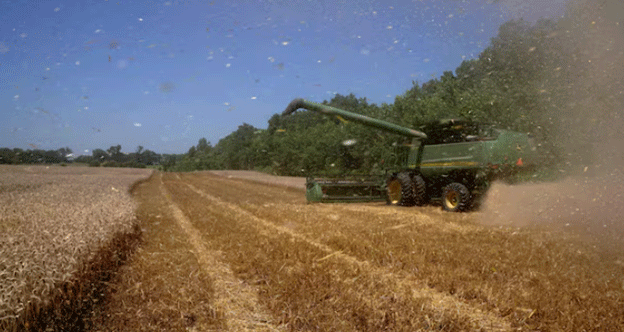U.S. Grain Exports Losing Global Ground: A Shift in Power and Production
For much of the 20th century, the United States was the undisputed leader in global grain exports. Its crops—especially corn, wheat, and soybeans—fed the world and supported an enormous agricultural economy. But the numbers today tell a different story: the U.S. is no longer the top wheat or soybean exporter and is being aggressively challenged in corn exports by Brazil.
Corn: A Competitive Chase
The U.S. still leads in global corn exports, but the margin is shrinking rapidly. Over the last five years, the U.S. share of global corn exports averaged just 31%—a far cry from the 61% share two decades ago and down from 80% in the 1970s.
By contrast, Brazil, which accounted for just 5% of global corn exports 20 years ago, has climbed to 22%, with infrastructure investments, favorable weather, and multiple harvests per year enabling year-round exports. In 2023, Brazil even briefly surpassed the U.S. in total corn exports during peak months, according to USDA and trade data.
Soybeans: Brazil Takes the Crown
The story is more dramatic for soybeans. The U.S. once dominated the market with more than 80% of global exports in the 1970s. That figure has since fallen to a record-low 27%, while Brazil now commands 55% of global soybean exports, up from 39% a decade ago.
Brazil officially overtook the U.S. as the top soybean exporter in the 2012–13 season and has extended its lead thanks to favorable exchange rates, trade ties with China, and efficient logistics.
Wheat: From Top Exporter to No. 4
The United States was the world’s top wheat exporter until about 2013, but today ranks fourth, behind Russia, the EU, and Australia. From a 44% global export share in 1980, U.S. wheat now represents only 11% of global exports.
Russia, once the world’s largest importer of wheat in the 1980s, is now the top exporter, controlling over 20% of global wheat shipments. Its production has expanded more than 70% in the past decade, fueled by strategic government support and investment in infrastructure.
Production Trends Reflect Export Struggles
The decline in U.S. export share mirrors a broader trend: global grain production has become more diversified. While the U.S. remains the top corn producer (31% of global output) and second in soybeans (28%), these are record-low shares.
- U.S. wheat production has dropped to just 6% of global output, compared to 15% in 1980.
- Brazil, by contrast, now produces 39% of global soybeans, up from 30% a decade ago.
- Brazil’s corn production has increased by 55% in the last ten years, currently making up 10% of global output.
- Russia’s wheat production now stands at 11% of global output, up from 7% a decade ago.
Trade Policy Impacts: Lessons from the Past
History has shown that unilateral trade decisions can backfire. When President Jimmy Carter enacted the 1980 grain embargo against the Soviet Union, it reduced U.S. grain credibility and opened the door for global competitors. Similarly, recent trade tensions with China during the Trump administration prompted Beijing to diversify away from U.S. soybeans, accelerating Brazil’s rise.
New reciprocal tariffs proposed by the U.S. in 2025 may further erode American competitiveness if key buyers like China or Southeast Asia look to alternative suppliers.
The numbers are clear: the United States no longer dominates global grain exports. Rising powers like Brazil and Russia have capitalized on market shifts, trade disputes, and agricultural investment to seize export share and reshape the global grain economy. For U.S. farmers and policymakers, the path forward requires renewed competitiveness, smart trade strategies, and investment in productivity. The future of American grain will depend not on past glory, but on adaptability to a changing global landscape.
Error





